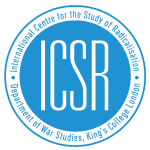The full report can be accessed here. Read on for the Executive Summary.
• Despite the significant degradation of ISIS’s military strength, the campaigns against them appear to be driven by a belief that physical victory equates to ISIS’s ideological defeat. Consequently, none of the primary actors in the anti-ISIS coalition have emphasised the potential benefits of rehabilitating captured ISIS members.
• Drawing on first-hand interviews with experts and practitioners, all of whom have ‘on-the-ground’ experience in Syria, this paper seeks to describe the key priorities and challenges for the Syrian Democratic Forces (SDF) and rebel groups who are dealing with ISIS members; analyses the community-led initiatives aiming to rehabilitate and reintegrate the members and communities that were exposed to ISIS’s ideology; and attempts to assess the impact of such efforts, identifying gaps and missed opportunities. This analysis would be the first of its kind in relation to the rehabilitation and reintegration efforts that are currently occurring in Syria.
• While some of the dynamics that pressure locals to be affiliated with ISIS apply strictly to Syrians, other factors are similar in-part to the ones that drove thousands of foreign fighters to join the group. Such motivations include: 1) Financial benefits; 2) Protection; 3) Military capacity and 4) Ideology. While it is not clear how many people fit each of these profiles, local experts argue that the majority of people joined ISIS for other reasons than ideology. Identifying and understanding such motives are important for both countering ISIS’s recruiting tactics and rehabilitating its supporters.
• The SDF’s post-ISIS policies are currently stuck between capturing more ISIS supporters, and figuring out what to do with the enormous number that have already been detained. The SDF efforts are ultimately focused on the short-term, such as securing the collective detention camps or releasing them through local reconciliation deals, instead of designing well-defined policies to spend their limited resources efficiently. The fragile state of SDF-run detention camps, and the lack of official efforts to rehabilitate those detained in them, could create fertile breeding ground for potential ISIS recruits.
• The lack of formal efforts to deal with the emerging problems in rebel-held areas, a result of ISIS’s territorial loss, has pushed civil society actors to establish ad-hoc and limited community-based initiatives to deal with such issues. For example, the Syrian Counter Extremism Centre has been established in the northern city of Mare’ to rehabilitate detained ISIS members. Likewise, the activist-run Sound and Picture Organization focuses on collectively countering ISIS’s ideology among civilians who lived under the group’s rule and could be susceptible to its influence.
• Although rebel-controlled areas in northwestern Syria appear to have more initiatives to limit ISIS’s inspiration, the majority of those efforts are ad-hoc community-based initiatives with limited impact. Apart from their involvement in a few local reconciliation processes, official actors in those areas, whether rebels or governing entities, do not seem to be involved in facilitating or supporting such initiatives, thus negatively limiting their scale, impact and sustainability.
• The international community and the countries fighting ISIS in Syria have a massive stake in ensuring the successful reintegration and rehabilitation of ISIS members. Ignoring such efforts will likely allow ISIS to use its ideology and propaganda to capitalise on the current insecurity, perpetuating instability in both Syria and the region as a whole.
This report was written by Haid Haid.
